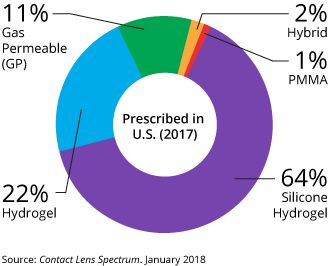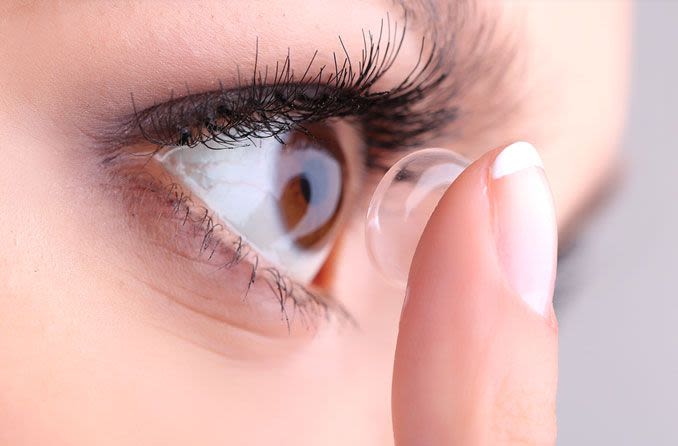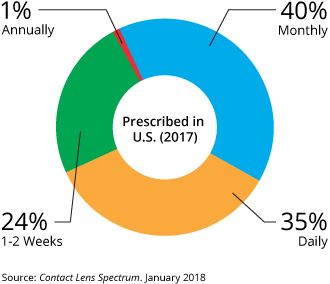What are the different layers of the cornea?
The cornea is the clear front wall of the eye, similar to a watch crystal. Functionally, the cornea has 3 main layers. All layers are clear and must be so to focus light properly.
The outer 10% of the cornea, the epithelium, is the protective skin layer that has sensation. It tells you to blink when your eyes are dry or if you get something in it. The epithelium protects the stroma from infection, scarring, drying out, and other potential harm. Just like the outer layer of your skin, the corneal epithelium sheds and regenerates itself every week. The new cells are grown by corneal epithelial stem cells. Therefore, an eye with an area of bad or opaque epithelium that blocks vision likely does not need a transplant to remove to opacity. Instead of the opacity typically only needs to be removed so that new healthy and clear epithelium can grow in (superficial keratectomy or SK). All other corneal layers do not regenerate and would need to be replaced or transplanted if removed.
The middle layer, the stroma, is the tough structural portion that makes up about 85% of the cornea thickness. The stroma is covered on the outside by the epithelium and on the inside by Descemet’s membrane.
The inner layer of the cornea, Descemet’s membrane, makes up 3 to 5% of its thickness. It is a thin Saran wrap-like membrane that has a single layer of extremely important endothelial cells living on its inner surface. The cornea needs oxygen and nutrients delivered to it, but it does not have blood flow like other parts of the body since blood vessels would make it opaque. The cornea is nourished by a clear fluid called aqueous humor. Aqueous inside the eye is made by arteries and is drained by veins. Descemet’s membrane limits the rate that aqueous humor can flow into the cornea. The endothelial cells pump out “used” aqueous humor so that it does not build up in the cornea which would otherwise make it opaque.

Is it possible to remove and/or transplant just one layer of the cornea?
Yes. We can explain the different types of cornea transplantation using the analogy of a wall. Think of the stroma as the drywall and bricks, Descemet’s membrane and endothelium as the wallpaper, and the epithelium as the temporary protective layers of clear coat that the owner must paint on the bricks from time to time.
Not that long ago, the only available surgery was a full thickness cornea transplant or penetrating keratoplasty (PK). With PK, all of the corneal layers are transplanted, and new epithelial cells grow over the new cornea in time. The entire wall is knocked out with a hammer, and a new wall and all its layers are brought in. The owner provides a new layer of clear coat over time. A prosthetic corneal transplant (keratoprosthesis (KPro) is an artificial full-thickness corneal transplant.
Selective keratoplasty surgeries are a huge advance over PK in that they allow us to replace just the portion of the cornea that is diseased.

-
- Superficial keratectomy (SK) and phototherapeutic keratectomy (PTK) remove the epithelium (and possibly some superficial stroma with PTK) so that new healthier epithelium can grow in. The corneal epithelium is the only layer of the cornea that regenerates. So, SK and PTK aren’t true transplants. They are like removing some imperfections in the layer of clear coat on the outside of the house so that the owner can lay down new clear coat. Conversely, an epithelial stem cell transplant is necessary when the owner’s can of clear coat runs out or goes bad. It becomes necessary to give the owner a new supply of clear coat, which involves transplanting in a special area of a donor cornea.
-
- Deep anterior lamellar keratoplasty (DALK) transplants all stroma but leaves the host’s healthy Descemet’s membrane and endothelium behind to allow less risk of rejection or less risk from blunt trauma. The entire wall is changed out, but the host’s own delicate wallpaper is left behind.
- Descemet’s membrane endothelial keratoplasty (DMEK) and Descemet’s stripping automated endothelial keratoplasty (DSAEK) replace Descemet’s membrane and endothelium without removing the host’s stroma. DMEK is more selective than DSAEK. Both DMEK and DSAEK remove old Descemet’s membrane and endothelium. DMEK adds a new Descemet’s membrane and endothelium only. DSAEK also adds a new Descemet’s membrane and endothelium but with an additional layer of donor stroma. Using the wallpaper analogy, in both DMEK and DSAEK the old wallpaper is removed. With DMEK, only new wallpaper is inserted. With DSAEK, a new piece of drywall that has new wallpaper on it is inserted on top of the old drywall.
Why do we need different types of transplants? Why not just do PK for everyone
PK has many limitations regarding vision, astigmatism, recovery time, rejection rate, and other risks. All types of selective transplants improve the outcomes when compared to PK. DMEK especially has many other benefits compared to DSAEK and PK. For example, performing PK for purely endothelial disease is outdated. It would be like knocking down the wall and bringing in a whole new wall when the only thing needed is new wallpaper!

Do I need to go on systemic immunosuppressive medications for a corneal transplant?
Not for most types of corneal transplants. Epithelial stem cell transplants are an exception. When someone gets a kidney or a heart transplant, they need to go on strong medications that make the immune system less aggressive and less likely to attack the transplant. These medications have some potentially significant side effects.
Because there are no blood vessels in the cornea, it is generally invisible to the immune system. Thus for corneal transplants, with the exception of epithelial stem cell transplants, we only need anti-inflammatory eye drops to prevent an immune system attack or rejection. Most patients get down to one drop a day after several few months.
Rarely, patients with aggressive immune systems require stronger systemic medications to prevent rejection. Even with aggressive immune systems, rejection is still very rare with DMEK and is more commonly seen with DSAEK, DALK, or PK. PK has the highest risk of rejection.
After a corneal transplant, do I have to take any precautions if I ever receive a vaccination?
There is some data to suggest that the increase in the immune system activity after vaccination, including the flu and shingles vaccines, may put the graft at a slightly increased risk for a rejection episode. To combat this, we typically recommend that if you were down to just one steroid drop a day, immediately following a vaccine you should increase the steroid drops to four times a day for one week, then two times a day for one week, and then go back to just one daily. If you have previously been told that you cannot take steroid drops due to pressure problems or other issues, ask your cornea surgeon for advice before getting a vaccine. transplant.
How long will my transplant last?
Traditional full thickness corneal transplants (PK) last about 20 years. Cell count studies show that, with the passage of time, transplants still lose endothelial cells gradually just like any other cornea, but usually at a faster rate. When the endothelial cell counts fall low enough, the transplant becomes opaque and fails. Since DMEK and DSAEK are relatively new, it is not possible to say how long they will last; however, preliminary data is encouraging, especially for DMEK. There is variation between transplants, but early data suggest some transplants can even last one’s lifetime. Either way, the replacement of a transplant is possible.
Dr. Tenkman is studying variables that may reveal which donors have cells that are more resistant to death and also surgical techniques that are minimally harmful to endothelial cells. Many surgeons suggest it is normal to lose 30 to 50% of the donor’s endothelial cells during surgery. We have some early data suggesting less than 10% cell loss from surgery when selecting a specific subset of donors.
Does a rejection episode mean that I will lose my cornea transplant?
No. If untreated, a rejection episode can cause significant damage. But usually, the episode stops with an increase in anti-inflammatory eye drops. Patients are instructed to RSVP: come see us if they develop Redness, Sensitivity to light, Vision reduction, or Pain. It’s key to see us right away for prompt diagnosis and treatment.
Will I need glasses after my transplant? Could laser vision correction be done to reduce any postoperative need for glasses?
Whether or not you need glasses after your transplant depends on many factors. DMEK transplants reduce glasses dependence the most often. DSAEK is less predictable. DALK and PK can both frequently cause high astigmatism that needs glasses or even hard contacts to attain good vision.
Some patients are candidates for ASA (advanced surface ablation) to minimize their dependence on glasses or contacts after corneal transplant surgery. ASA is a laser vision correction procedure similar to LASIK. Whether or not ASA could be done to reduce dependence on glasses or contacts after surgery depends on several factors and is taken on a case by case basis.
What are the costs and risks of a cornea transplant?
Corneal transplant tissue is donated, but still typically costs $3,700 or more. The fees go to the eye banks that must harvest the corneas, screen for possible diseases that could be transferred to the patient, transport, and process the corneas, and deliver them to the surgery center… all within just a few days. The cost of receiving a transplant includes not just the tissue, but the surgery center, surgeon, and anesthesia fees. Fortunately, these costs are less at an outpatient surgery center and are typically covered by Medicare and private insurance, although patients may be responsible for deductibles and co-payments. Generally, DMEK and DSAEK can be performed in an outpatient surgery center whereas DALK and PK more often have to be done at a hospital. Having surgery at a hospital can increase costs several-fold.
The risk of infection from a corneal transplantation procedure is about the same as following a routine blood transfusion. The risk of receiving a disease from a transplant is very low.
Other risks include primary graft failure, rejection, graft dislocation, cataract formation, glaucoma, infection, irregular astigmatism, double vision, bleeding, iris damage, vitreous prolapse, and cystoid macular edema. Most of these complications are quite rare but are theoretically possible with all types of eye surgery. Patients using steroid drops, which all corneal transplants require, have to be followed for the development of increased pressure. High eye pressure usually gives no symptoms, so follow up is crucial to allow the doctor to treat as necessary with medication or procedures. Patients are usually seen every 3 to 6 months for life depending on the strength of steroid used.
In our hands, the overall success rate for a DMEK or DSAEK graft attaching and working well is about 99%. Should the transplant fail due to rejection or otherwise, it would need to be repeated.
Because the time to heal is longer for DALK and PK, and because they involve more risk, the odds of a DALK or PK failing to restore vision is more significant than for DMEK or DSAEK. DALK and PK have several additional risks.
- DALK, and more so PK, have a higher risk of bleeding during surgery while the patient’s own cornea is removed and the eye is depressurized. Although not common, such bleeding can do significant damage to the eye.
- DALK, and more so PK, also have a significant risk of rejection. Higher doses of steroid drops may be necessary in here to prevent or treat rejection, which can increase the risk of increased eye pressure (glaucoma).
- DALK and PK involve a 360-degree corneal incision. Such large corneal wounds don’t heal with full strength and are at risk to split open with moderate blunt trauma (ie if a patient fell and hit their face in the shower). If the wound were to split open, it could lead to loss of the eye.
- DALK and PK require about 16 sutures. These sutures are not removed for many months or even over a year. The sutures are buried in a manner so they cause no pain to the patient. However, they commonly become loose and can cause a foreign body or sandy sensation. More significantly, a loose suture is a risk for infection (corneal ulcer). Corneal ulcers can be more serious in the setting of a corneal transplant because the immune system in the area is suppressed by steroid eye drops.
- DALK and PK commonly heal with large amounts of astigmatism. The normally spherical corneal surface becomes like an irregularly shaped egg. Since the smooth corneal shape largely determines focus, an irregular cornea causes blurred vision. Corneal astigmatism is measured in diopters. In routine patients who have not had had a corneal transplant, we consider 1 diopter mild astigmatism, 2 diopters moderate astigmatism, and 3 diopters high astigmatism. DALK and PK average about 4 to 5 diopters of astigmatism. A common range is 2 to 10 diopters of astigmatism. Regarding astigmatism risk, there are controllable and uncontrollable causes. The surgeon can try to sew the graft as evenly as possible to reduce risk of severe astigmatism; however, the surgeon cannot control the natural tension lines in the cornea or how symmetrically the tension lines will balance as the wound heals. Severe or irregular astigmatism cannot be corrected with glasses. Special hard contact lenses are often necessary. On average, one-third of all DALK and PK patients need hard contact to see their best due to astigmatism. Therefore, at Bennett & Bloom, we never perform DALK or PK for keratoconus patients to try to get out of contact lenses. The patient could go through all the added cost and risk of surgery only to end up where they started… or worse. DALK and PK are reserved for severe disease that cannot be fixed by contact lens wear
For corneal transplant at Bennet & Bloom Eye center in the USA or for medical tourism in the USA, contact Eyeupdate Clinic & Optical Supplies, 01 Ajuwon junction, Off Elliot bus stop, Iju Ishagah, Lagos.Tel: +2347030000001, +19093663551












 The most common symptoms associated with Computer Vision Syndrome (CVS) or Digital Eye Strain are
The most common symptoms associated with Computer Vision Syndrome (CVS) or Digital Eye Strain are Uncorrected vision problems can increase the severity of Computer Vision Syndrome or Digital Eye Strain symptoms.Viewing a computer or digital screen is different than reading a printed page. Often the letters on the computer or handheld device are not as precise or sharply defined, the level of contrast of the letters to the background is reduced, and the presence of glare and reflections on the screen may make viewing difficult.
Uncorrected vision problems can increase the severity of Computer Vision Syndrome or Digital Eye Strain symptoms.Viewing a computer or digital screen is different than reading a printed page. Often the letters on the computer or handheld device are not as precise or sharply defined, the level of contrast of the letters to the background is reduced, and the presence of glare and reflections on the screen may make viewing difficult.





